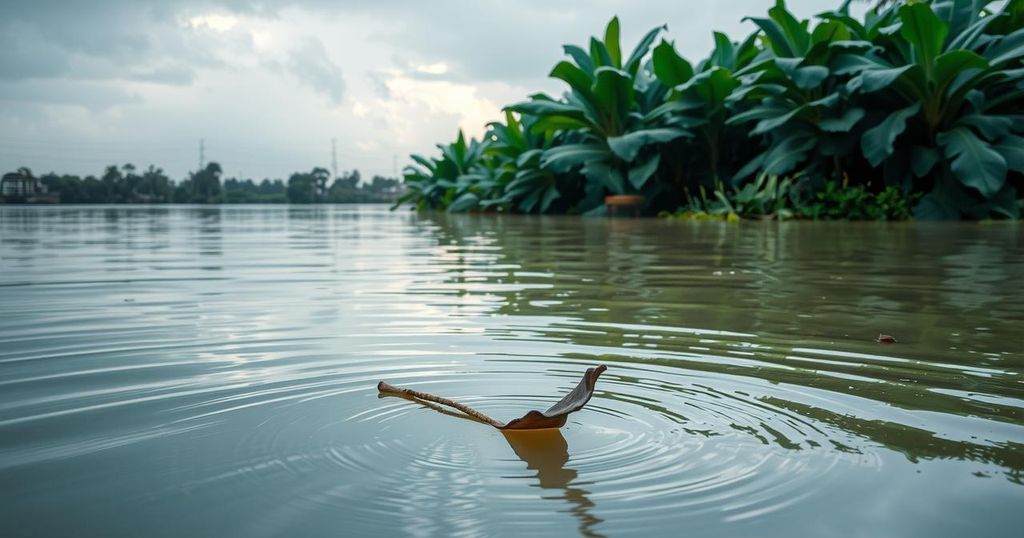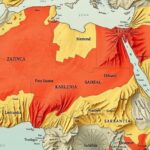Politics
AFRICA, ASIA, CAMEROON, CENTRAL, CENTRAL AND WEST AFRICA, CHINA, CLIMATE CHANGE, FOOD SECURITY, HAM, HASSAN, HASSANE HAMADOU, HUMANITARIAN AID, INTERNALLY DISPLACED PERSONS (IDPS, LAKE CHAD, LAKE CHAD BASIN, MAIDUGURI, MALI, MODU, MOROCCO, NIGER, NIGERIA, NORTH AMERICA, SAHEL, UNITED STATES, WEST AFRICA
Omar El-Sharif
Severe Floods Worsen Humanitarian Crisis in Sahel and Lake Chad Region
Severe floods have hit the Sahel and Lake Chad region, exacerbating the humanitarian crisis stemming from conflict and climate change. Over 239,000 people have been affected, with urgent support needed for basic necessities and infrastructure improvement. The floods disrupt agriculture and education, intensifying food insecurity and requiring increased international funding for emergency response and recovery efforts.
The Sahel and Lake Chad region faces an acute humanitarian crisis, exacerbated by ongoing conflict, climate change, and mass displacement. Hassane Hamadou, NRC’s regional director, highlights the urgent need for shelter, food, and hygiene supplies for affected communities. Additionally, there is a pressing requirement for infrastructure improvements to foster resilience against future natural disasters.
In Cameroon and Niger, communities near the Lake Chad Basin, already struggling with insecurity and displacement, now confront increasing frequency of severe floods. These floods devastate agricultural lands essential for food security and economic practices, leading to escalating food insecurity. Moreover, the destruction of schools limits access to education, as many institutions become shelters for displaced individuals.
Modu, a victim of the floods in Maiduguri, Nigeria, articulated the personal impact, stating, “We lost the majority of our livelihood in the water, and the speed of the flow didn’t allow us to take any significant property with us.” He expressed the collective despair of watching their homes succumb to the rising waters while aiding others in need.
In Mali, the lean season has exacerbated challenges, pushing communities reliant on farming and pastoralism closer to famine. Immediate assistance is critical to avert further degradation of these already dwindling livelihoods. Local humanitarian organizations are tirelessly working to provide aid, despite limited resources.
As of mid-2024, the Humanitarian Response Plan for the Sahel was only 25 percent funded, and there is an urgent call for the international community to bolster funding for both emergency interventions and sustainable recovery efforts. This includes strategies for disaster risk reduction and preparedness across the affected nations.
Hassane Hamadou reiterated the alarming reality: “These severe floods are a stark reminder of the Sahel and Lake Chad region’s vulnerability to climate change, which may only worsen in the nearby future.” He emphasized that fragile populations cannot shoulder these challenges single-handedly, underscoring the need for collective action.
The Sahel and Lake Chad region is characterized by vulnerabilities caused by a combination of climate change, ongoing conflicts, and the displacement of populations. These factors create a precarious humanitarian situation, leading to high levels of food insecurity, destruction of livelihoods, and compromised access to basic services. The ongoing floods serve as a critical indicator of the region’s fragility and the urgent need for targeted humanitarian responses and disaster preparedness measures.
The increasing severity of floods in the Sahel and Lake Chad region highlights the urgent need for humanitarian assistance and long-term resilience-building measures. Individuals affected face profound challenges that jeopardize their livelihoods and well-being. Enhanced funding and support from the international community are critical to mitigate the impacts of these disasters and to build strong, sustainable responses to future challenges.
Original Source: www.nrc.no






Post Comment